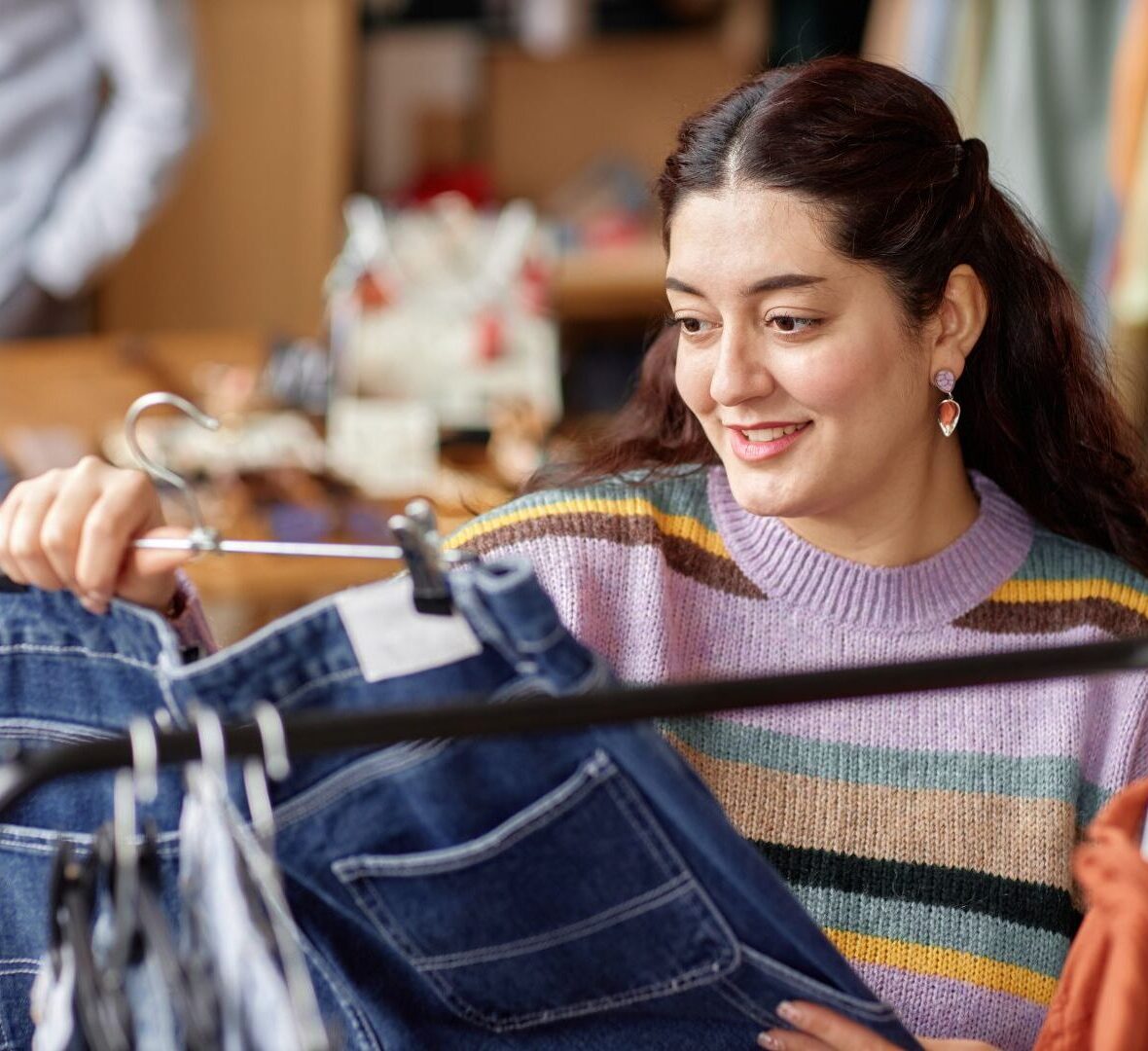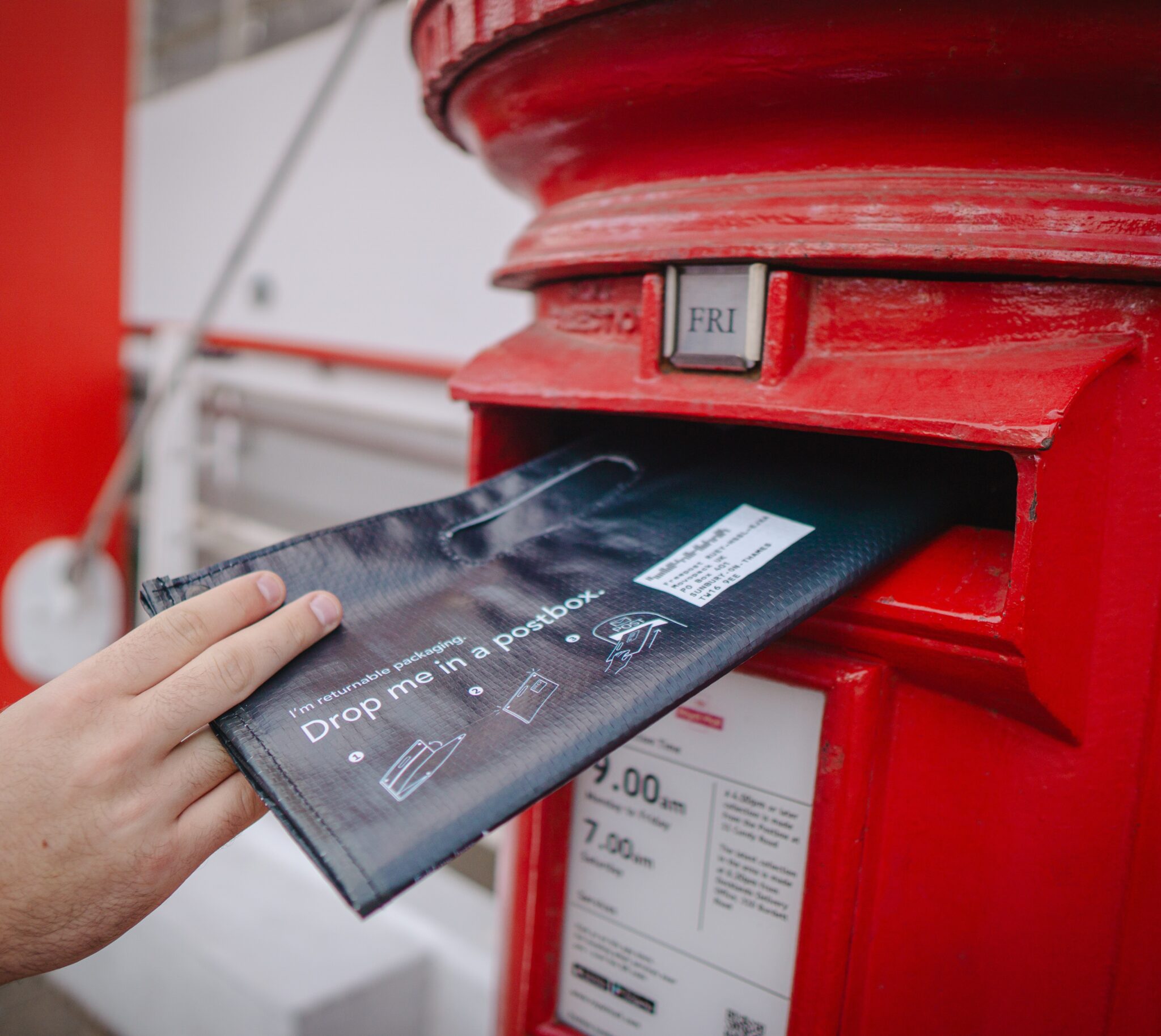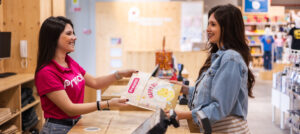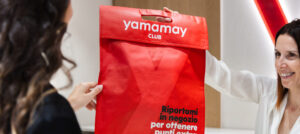Evolving values and new priorities
More and more shoppers are paying attention to what’s behind the products they buy. Climate awareness is higher than ever, and younger generations, particularly millennials and Gen Z, expect brands to align with their values. Social media also plays a decisive role: information about brand practices spreads quickly, and transparency is turning into something shoppers increasingly expect.
At the same time, we live in the information age: today, it is possible to discover, share and scrutinise supply chains, materials, packaging and brand practices in real time. This transparency empowers consumers and raises their expectations of brands.

Sustainable shopping trends that are shaping the market

1. Concrete actions instead of marketing claims (anti-greenwashing).
Consumers are increasingly aware of greenwashing. They expect evidence, clarity and measurable actions. According to a recent survey, 76% of consumers (source: PWC) say they would no longer support companies that neglect sustainability or social well-being. This means that consumers are increasingly looking for concrete evidence of sustainability, not just marketing claims.

2. The rise of resale, refurbishment and rental models
Instead of always buying new products, more and more consumers are choosing alternatives such as resale, rental and refurbished products. The circular model market is gaining traction, particularly in the fashion, electronics and consumer goods sectors. This trend shows that people are rethinking the concept of ownership and looking for ways to reduce waste, and brands that offer these opportunities are becoming increasingly popular.

3. Growing preference for materials that reduce waste and environmental impact
Whether shopping online or in-store, consumers are paying more attention to the materials products are made from and how they are packaged. Oversized boxes, plastic fillers and single-use packaging now seem outdated. More and more consumers are choosing brands that minimise waste and use materials with a lower environmental impact.

4. Reuse and minimalist shopping
The trend is clearly shifting towards “less, but better”. Consumers are reducing their purchases of unnecessary items and preferring products and packaging designed to be reused. Returnable or reusable packaging, such as Movopack, refill systems and minimalist design all support this desire to shop more responsibly without sacrificing the experience.
How are brands responding?
Brands have clearly understood the message: consumers want more than just promises. For this reason, many companies are radically rethinking their approach and implementing small, concrete improvements that consumers can easily notice.
In the fashion, beauty and e-commerce sectors, this often starts with more thoughtful product design, a reduction in unnecessary materials and smarter packaging solutions. Some brands are looking for reusable or returnable packaging alternatives, such as Movopack-like solutions, which practically reduce waste while improving the consumer experience.
Conclusion
It is clear that the shift towards sustainability is not only coming from governments or industry leaders. It is also coming from everyday consumers. By asking more questions, making more informed choices and supporting brands that take concrete action, consumers are transforming the way companies operate.
Are you ready to rethink your packaging as a first step? Request a free sample.




